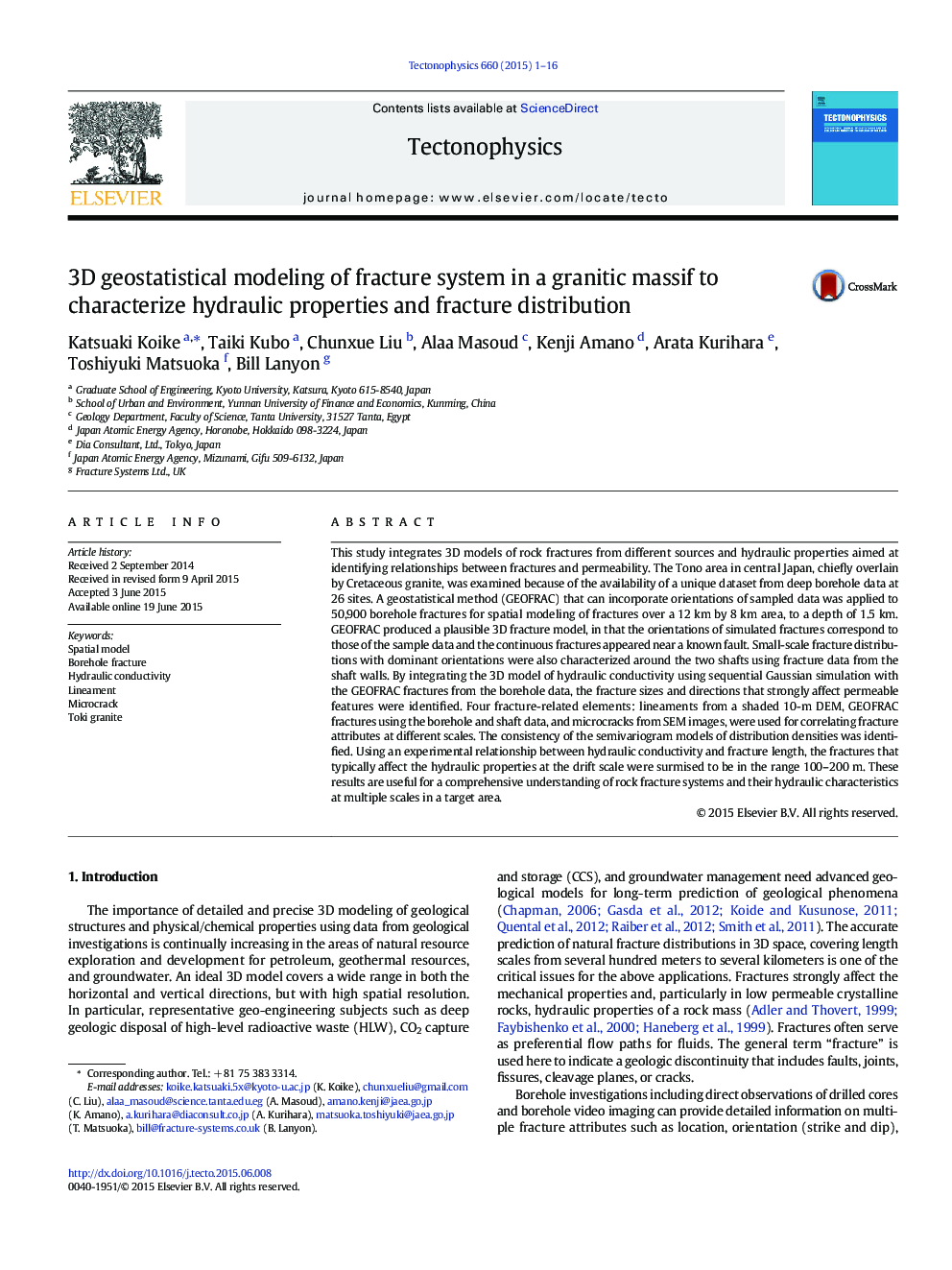| کد مقاله | کد نشریه | سال انتشار | مقاله انگلیسی | نسخه تمام متن |
|---|---|---|---|---|
| 4691486 | 1636735 | 2015 | 16 صفحه PDF | دانلود رایگان |
• 3D fracture distributions were modeled over a 12 by 8 km area to a depth of 1.5 km.
• Correlation of distribution patterns of local and regional fractures was suggested.
• Hydraulic conductivities were characterized by integrating with 3D fracture model.
• Positional correspondence of long GEOFRAC fractures with DEM lineaments was found.
• Hydraulic conductivities at multiple scales were estimated using fracture length.
This study integrates 3D models of rock fractures from different sources and hydraulic properties aimed at identifying relationships between fractures and permeability. The Tono area in central Japan, chiefly overlain by Cretaceous granite, was examined because of the availability of a unique dataset from deep borehole data at 26 sites. A geostatistical method (GEOFRAC) that can incorporate orientations of sampled data was applied to 50,900 borehole fractures for spatial modeling of fractures over a 12 km by 8 km area, to a depth of 1.5 km. GEOFRAC produced a plausible 3D fracture model, in that the orientations of simulated fractures correspond to those of the sample data and the continuous fractures appeared near a known fault. Small-scale fracture distributions with dominant orientations were also characterized around the two shafts using fracture data from the shaft walls. By integrating the 3D model of hydraulic conductivity using sequential Gaussian simulation with the GEOFRAC fractures from the borehole data, the fracture sizes and directions that strongly affect permeable features were identified. Four fracture-related elements: lineaments from a shaded 10-m DEM, GEOFRAC fractures using the borehole and shaft data, and microcracks from SEM images, were used for correlating fracture attributes at different scales. The consistency of the semivariogram models of distribution densities was identified. Using an experimental relationship between hydraulic conductivity and fracture length, the fractures that typically affect the hydraulic properties at the drift scale were surmised to be in the range 100–200 m. These results are useful for a comprehensive understanding of rock fracture systems and their hydraulic characteristics at multiple scales in a target area.
Journal: Tectonophysics - Volume 660, 7 October 2015, Pages 1–16
